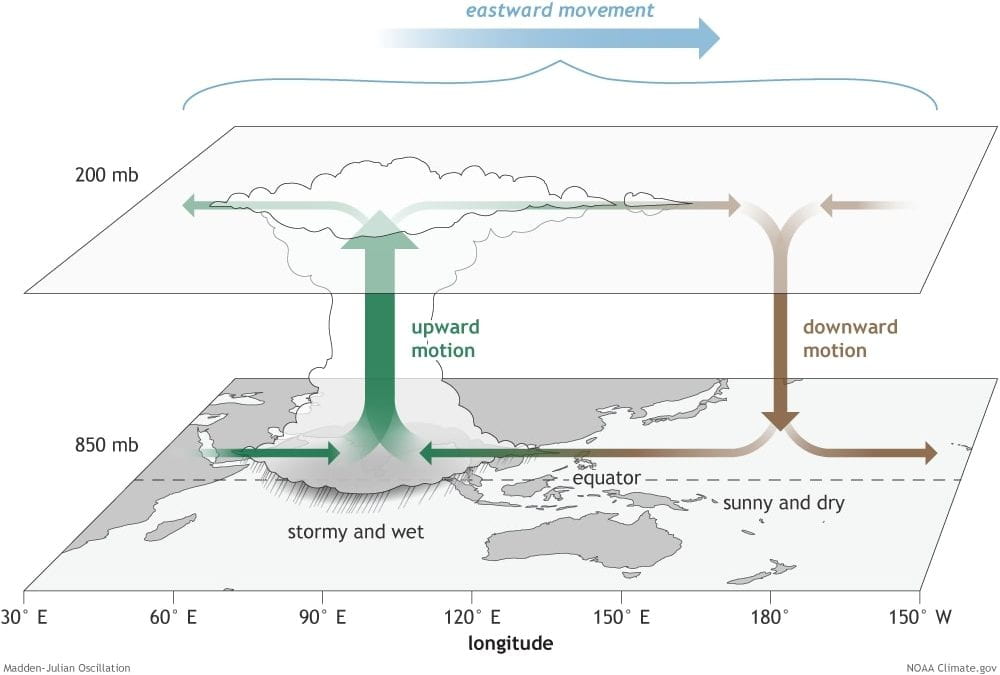Photo above, from the National Oceanic and Atmospheric Administration (NOAA): MJOs are powerful tropical thunderstorm systems that move eastward, as depicted in this graphic, and affect global weather.
STONY BROOK, NY, May 26, 2021 – The accuracy of weather forecasting decreases with each additional day of forecasting and is limited in accuracy at two weeks. Now a new study published in Nature Communications and led by Hyemi Kim, PhD, Associate Professor in the School of Marine and Atmospheric Sciences (SoMAS) at Stony Brook University, highlights a way to improve weather forecasts beyond two weeks by using machine learning.
Accurate weather forecasting has become increasingly important to society because of its socioeconomic value due to globalization, trade, travel, and the needs of policymakers and others such as risk managers. Reliable forecasts for weather conditions three-to-four weeks away (called the subseasonal range) can provide vital information about hazardous weather threats such as floods and heat waves.
Professor Kim and colleagues focused on a phenomenon known as the Madden-Julian oscillation (MJO), a belt of thunderstorms that starts over the equatorial tropical Indian Ocean and moves slowly eastward toward the central Pacific Ocean, in a repetitious manner each year every 40 to 50 days. Scientists have used MJO as a key tool for three-to-four-week weather forecasting. However, computer modeling has not been able to simulate all aspects of MJO and therefore extended-range forecasts based on MJO information has a larger margin of error.
The team combined state-of-the-art weather forecast models and observations with a machine learning process (a Deep Learning bias correction using all of the data) to forecast the MJO. With this Deep Learning bias correction, forecast errors in the MJO averaged over four weeks reduced by 80~90 percent.
Professor Kim explains that computer models used for forecasting lose accuracy significantly when models try to reproduce MJO that crosses the Maritime Continent and moves eastward. Because of this, more model biases occur and predictions for global weather beyond two weeks becomes difficult.
“Our study demonstrates that machine learning substantially reduces the MJO forecast errors from models, and this will help improve global extended range forecasts,” says Professor Kim. “Because we created a simple approach with machine learning, this method can be implemented into operational forecasts that are currently used for two-week weather forecasting and longer.”
The researchers plan to apply their machine learning technique to test ways to improve forecasts of extreme weather events, such as hurricanes or heat waves in New York.
The research was supported in part by the National Science Foundation (grant AGS-1652289).




